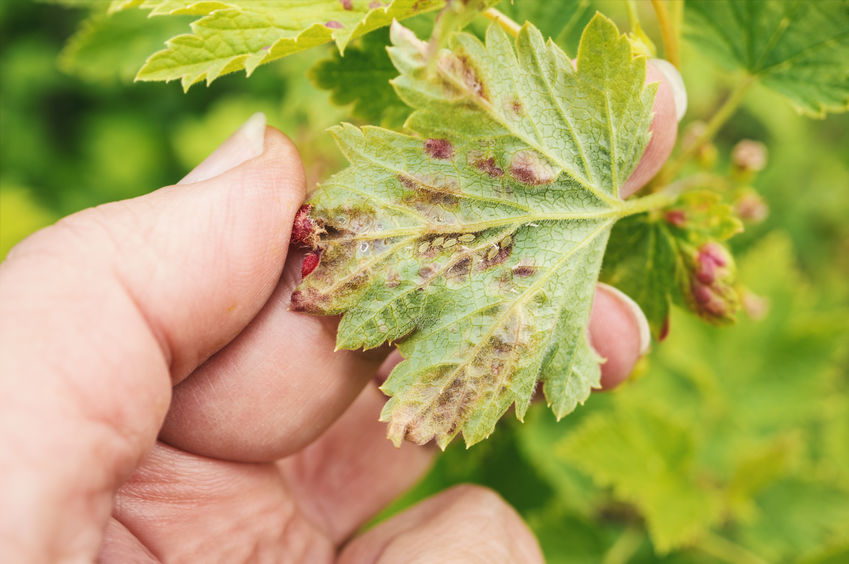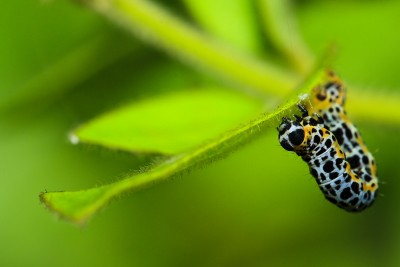- Clean Home
- Backyard & Garden
- Dirty Dozen Bad Garden Bugs
The Dirty Dozen Bad Garden Bugs
The dirty dozen bad garden bugs. Dead or alive, these bugs are wanted in the Wild, Wild West way.
These garden insects eat or suck the juices out of your plants. And since they go from plant to plant, they also spread diseases. Teach kids how to recognize these unwanted interlopers and get rid of them. And how to identify the good bugs, too.
If you're handpicking these bad guys off your prize plants, you have two options: pick and crush (not for the faint of heart), or pick and toss into a jar half full of water and a dash of liquid soap.
Here are the dirty dozen bad garden bugs to recognize and eliminate on sight.
The Dirty Dozen Bad Garden Bugs
These dirty dozen bad garden bugs are worth getting to know and identify. Exterminating these pests is easier if you get the kids involved.
1. Dirty Dozen Bad Garden Bugs: Aphids
Plant aphids are little pear-shaped bugs that live to suck the life out of the tender greens on your plants. They come in various sizes, shapes, and colors: green, red, black, yellow, or brown.
They don't have a discriminating palate, though - they'll attack various vegetables, legumes, stone fruit crops, roses, apples, and ornamentals.
Spray these bad guys off your plants with water from the garden hose or a spray bottle. (And encourage good garden bugs that eat them for you!)
2. Corn Earworms
he small, white moth eggs that give rise to corn earworms are often laid directly on the silks of corn ears or on the leaves of tomato plants. This allows the newly hatched caterpillars to burrow immediately through the silks and into the tops of the ears, often leaving a noticeable hole.
Handpick these nasty garden bugs off your plants.
3. Tomato Hornworms
Tomato hornworms can ruin your tomato crop in record time. They feed nonstop, creating spotty and chewed leaves and fruit. They do the most damage in the caterpillar, or larva, stage.
Handpick these bad garden bugs off your plants on sight.
4. Vine Borers
The vine borer commonly attacks summer squash, winter squash, and pumpkins. Cucumbers and melons are less frequently affected. The adult borer bug resembles a wasp. It is approximately 1/2 inch long, with an orange abdomen featuring black dots.
Get rid of these bad garden bugs using the basic stem borer control method: Insert the wire into the hole in the stem and skewer.
5. Cucumber Beetles
Cucumber beetles are troublesome pests that attack cucumbers and related plants such as squash, melons, and pumpkins. These beetles are 1/4 inch long and have a yellow-green color with black stripes or spots.
They create holes in the leaves and often hide on the underside of the foliage, making them difficult to spot due to their green coloration.
In addition to damaging the plants, these pests also carry and spread a disease known as bacterial wilt. When plants are infected with this disease, they begin to wilt and ultimately die.
To protect your plants, handpick these pests as soon as you see them.
6. Cutworms
Cutworm is the name used for the larvae of several species of adult moths. They do the most damage early in the gardening season when they emerge from hibernation.
Different species range in color from grey to pink, green, and black, and can be as long as two inches. They can be solid, spotted, or striped.
Cutworms chew through plant stems at the base or even underneath the soil. Some species will also climb plants and destroy their foliage. In most cases, entire plants will be destroyed; they cause significant damage in a short amount of time.
Use cutworm collars to remove these bad garden bugs. You can create your own from sections of toilet paper or paper towel rolls pushed into the ground around the stems of transplants.
7. Cabbage Loopers
Cabbage loopers are small caterpillars with large appetites and are considered one of the most destructive pests in vegetable gardens.
These pests particularly thrive on plants in the cabbage family, such as cabbage, broccoli, cauliflower, kohlrabi, and collard greens. They also enjoy other vegetables like potatoes, tomatoes, spinach, and cucumbers.
These green worms grow up to 2 inches long and have silvery or white stripes running along their backs. They typically create holes in the leaves and often hide on the underside of the foliage.
Handpick cabbage loopers off your plants.
8. Mealybugs
Mealybugs are small, fuzzy white insects that measure about an eighth of an inch in length. They feed on plant sap and typically position themselves under leaves and at the joints of stems, using their piercing mouthparts, known as stylets, to extract sap from the plants.
This feeding method can harm the plant by draining its nutrients and may also transmit bacterial and fungal infections. Severe infestations can lead to the death of the plant.
To control mealybugs, you can spray them with water or gently wipe them away using a paper towel or tissue soaked in alcohol.
9. Spider Mites
Spider mites can be a significant headache for gardeners. When they invade a garden in large numbers, the damage they cause to infested plants can be devastating.
These pests are often referred to as red spider mites, although other species can be different colors. The most common variety is red, and they can be troublesome to deal with.
One effective way to manage spider mites is to spray them off plants using water from a spray bottle.
10. Snails and Slugs
Adult snails have coiled shells on their backs and typically measure between 1 to 1.5 inches in length. In contrast, slugs lack shells and are smaller, ranging from 1/8 to 1 inch long. Most slugs and snails are shades of gray, tan, green, or black, with some displaying darker spots or patterns.
Both slugs and snails feed on soft, tender plant tissues, creating large holes in leaves, stems, fruits, and bulbs. A slug infestation can completely destroy seedlings and seriously damage young plants.
To manage these pests, you can handpick them, crush them, or set out beer traps to lure them away.
11. Earwigs
These mini cockroach-like interlopers - commonly known as the pincher bug - invariably end up inside the lovely garden roses you bring inside your home.
Trap earwigs on sight and crush.
12. Whiteflies
Spray off these insidious insects with water or set out yellow sticky traps to catch and remove them.
Eliminating any of these dirty dozen bad bugs is sure to reward you with a garden that looks healthier and plants that live longer.
Finally, now that you can identify the dirty dozen bad garden bugs, ensure you know the 10 Most Wanted Good Bugs.
Keep these beneficial bugs safe from your bad guy eradication routine.
You Might Like These:
- Clean Home
- Backyard & Garden
- Dirty Dozen Bad Garden Bugs
























